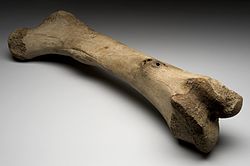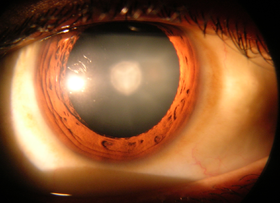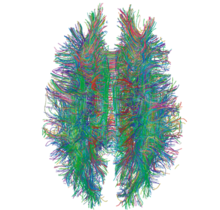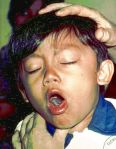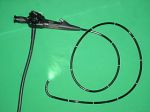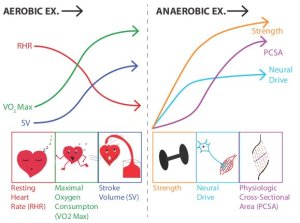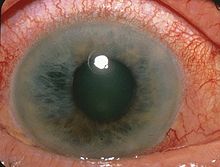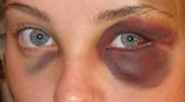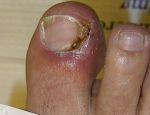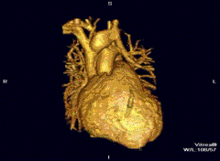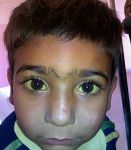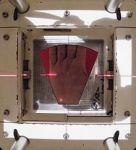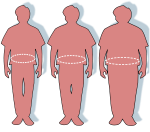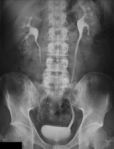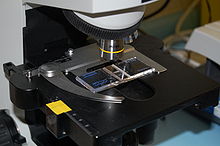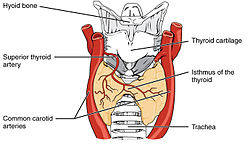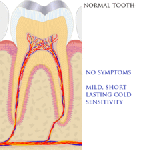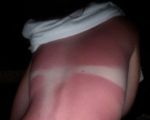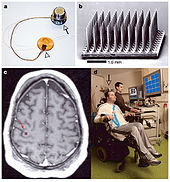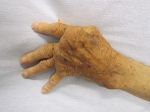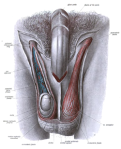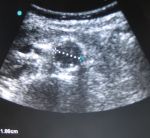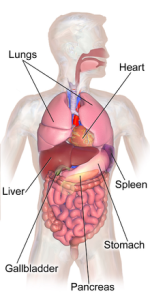Burns
Burns commonly occur by direct or indirect contact with heat, electric current, radiation, or chemical agents. Burns can lead to cell death.
There are 3 levels of burns:
• First-degree burns affect only the outer layer of the skin. They cause pain, redness, and swelling.
• Second-degree burns affect both the outer and underlying layer of skin. They cause pain, redness, swelling, and blistering.
• Third-degree burns affect the deep layers of skin. They are also called full thickness burns. They cause white or blackened, burned skin. The skin may be numb.
Burns on the face, hands, feet, and genitals can be particularly serious.
Symptoms
• Pain
• Peeling skin
• Swelling
• Red, white, or charred skin
First Aid
MINOR BURNS
• Run cool water over the area of the burn or soak it in a cool water bath
• Calm and reassure the person.
• After flushing or soaking the burn, cover it with a dry, sterile bandage or clean dressing.
• Protect the burn from pressure and friction.
• Once the skin has cooled, moisturizing lotion also can help.
MAJOR BURNS
• Wrap the person in thick material; such as a wool or cotton coat, rug, or blanket. This helps put out the flames.
• Pour water on the person.
• Make sure that the person is no longer touching any burning or smoking materials.
• Do NOT remove burned clothing that is stuck to the skin.
• Make sure the person is breathing.
DO NOT
• Do NOT apply ointment, butter, ice, medicines, cream, oil spray, or any household remedy to a severe burn.
• Do NOT remove clothing that is stuck to the skin.
• Do NOT give the person anything by mouth, if there is a severe burn.
• Do NOT place a severe burn in cold water. This can cause shock.

Calcium and bones
Your body also needs calcium to make healthy bones. Bones are the main storage site of calcium in the body.
Your body cannot make calcium. The body only gets the calcium it needs through the food you eat, or from supplements.
Bone density refers to how much calcium and other minerals are present in a section of your bone.
Some groups recommend much higher doses of vitamin D, but many experts feel that high doses of vitamin D are not safe for everyone.
High-calcium foods :
• Milk
• Cheese
• Ice cream
• Leafy green vegetables, such as spinach and collard greens
• Yogurt

Can’t sleep? Try these tips
Stick to a sleep schedule:
• Go to bed and get up at the same time.
• Get up if you cannot sleep.
• Do something quiet and relaxing like read a book.
Make your bedroom comfortable:
• Get a comfortable mattress.
• Keep it cool.
• Control the light
• Control sounds.
• Hide the clock.
• Put away electronics.
Practice Relaxation
Live for Good Sleep
Things you do during the day can affect how well you sleep at night. You should:
• Limit evening activities.
• Exercise.
• Limit naps.
• Limit caffeine
• Limit alcohol.
• Eat smart at night.

Cancer and lymph nodes
Cancer can spread or start in lymph nodes.Cancer cells can also spread to the lymph nodes from a cancer in any part of the body.
Cancer cells break off from a tumor in the body and travel to an area of lymph nodes.
How Cancer in Lymph Nodes is Found
Nodes swell as they work hard to fight cancer cells.
What it Means When Cancer is Found
• Surgery
• Chemotherapy
• Radiation

Cardiac arrest
Cardiac arrest occurs when the heart suddenly stops beating. When this happens, blood flow to the brain and the rest of the body also stops. Cardiac arrest is a medical emergency.
If it is not treated within a few minutes, cardiac arrest most often causes death.While some people refer to a heart attack as a cardiac arrest, they are not the same thing.
Problems that may lead to cardiac arrest include:
• Heart problems.
• Abnormal levels of potassium or magnesium..
• Severe physical stress.
• Medicines.
Symptoms
• Sudden loss of consciousness; a person will fall to the floor
• No breathing A racing heart
• Dizziness
• Shortness of breath
• Nausea or vomiting
• Chest pain
Exams and Tests
• Blood tests.
• Electrocardiogram (ECG).
• Cardiac MRI
Treatment
Cardiac arrest needs emergency treatment right away to get the heart started again.

Cataract removal
Cataract removal is surgery to remove a clouded lens from the eye.
Cataracts are removed to help you see better. The procedure almost always includes placing an artificial lens in the eye.
Cataract surgery is an outpatient procedure.
Adults are usually awake for the procedure. local anesthesia is given using eyedrops or a shot. This blocks pain. You will also get medicine to help you relax.
The doctor uses a special microscope to view the eye.
The surgery lasts less than half an hour. Most times, just one eye is done. If you have cataracts in both eyes, your doctor may suggest waiting at least 1 to 2 weeks between each surgery.
Risks
Very rare complications can include infection and bleeding. This can lead to permanent vision problems.
Before the Procedure
Before surgery, you will have a complete eye exam and eye tests by the ophthalmologist.
May prescribe eyedrops before the surgery.
After the Procedure
Before you go home, you may receive the following:
• A patch to wear over your eye until the follow-up exam
• Eyedrops to prevent infection, treat inflammation, and help with healing
You will need to have someone drive you home after surgery.
You will usually have a follow-up exam with your doctor the next day. If you had stitches, you will need to make an appointment to have them removed.
Tips for recovering after cataract surgery:
• Wear dark sunglasses outside after you remove the patch.
• Wash your hands well before and after using eyedrops and touching your eye. Try not to get soap and water in your eye when you are bathing or showering for the first few days.
• Light activities are best as you recover.
Recovery takes about 2 weeks. If you need new glasses or contact lenses, you can usually have them fitted at that time. Keep your follow-up visit with your doctor.

Cervical cancer
Cervical cancer is cancer that starts in the cervix. The cervix is the lower part of the uterus that opens at the top of the vagina.
Causes
• Having sex at an early age
• Having multiple sexual partners
• Having a partner or many partners who take part in high-risk sexual activities
Symptoms
• Abnormal vaginal bleeding between periods, after intercourse, or after menopause
• Vaginal discharge that does not stop, and may be pale, watery, pink, brown, bloody, or foul-smelling
• Periods that become heavier and last longer than usual
Cervical cancer may spread to the bladder, intestines, lungs, and liver. Often, there are no problems until the cancer is advanced and has spread.
Symptoms of advanced cervical cancer may include:
• Back pain
• Bone pain or fractures
• Fatigue
• Leaking of urine from the vagina
• Leg pain
• Loss of appetite
• Pelvic pain
• Single swollen leg
• Weight loss
Exams and Tests
• Pap smear.
• colposcopy.
• Cone biopsy.
Treatment
Early cervical cancer can be cured by removing or destroying the cancerous tissue. This is why routine Pap smears are so important to prevent cervical cancer. There are surgical ways to do this without removing the uterus or damaging the cervix, so that a woman can still have children in the future.

Chemotherapy
The term chemotherapy is used to describe cancer-killing drugs. Chemotherapy may be used to:
• Cure the cancer
• Shrink the cancer
• Prevent the cancer from spreading
• Relieve symptoms the cancer may be causing
HOW CHEMOTHERAPY IS GIVEN
Depending on the type of cancer and where it is found, chemotherapy drugs may be given different ways, including:
• Injections or shots into the muscles
• Injections or shots under the skin
• Into an artery
• Into a vein
• Pills taken by mouth
• Shots into the fluid around the spinal cord or brain
Chemotherapy is most often given in cycles.
These cycles may last 1 day, several days, or a few weeks or more. There will usually be a rest period when no chemotherapy is given between each cycle.
A rest period may last for days, weeks, or months. This allows the body and blood counts to recover before the next dose.
SIDE EFFECTS OF CHEMOTHERAPY
• Are more likely to have infections
• Become tired more easily
• Bleed too much, even during everyday activities
• Feel pain or numbness from nerve damage
• Have a dry mouth, mouth sores, or swelling in the mouth
• Have a poor appetite or lose weight
• Have an upset stomach, vomiting, or diarrhea
• Lose their hair
• Have problems with thinking and memory (“chemo brain”)

Chest CT

A chest CT scan is an imaging method that uses x-rays to create pictures of the chest and upper abdomen.
How the Test is Performed
• You’ll likely be asked to change into a hospital gown.
• You lie on a narrow table that slides into the center of the scanner. Once you are inside the scanner, the machine’s x-ray beam rotates around you.
• You must be still during the exam, because movement causes blurred images. You may be told to hold your breath for short period of time.
The complete scan takes 30 seconds to a few minutes.
How the Test will Feel
Some people may have discomfort from lying on the hard table.
Contrast given may cause a slight burning sensation, a metallic taste in the mouth, and a warm flushing of the body. These sensations are normal and usually go away within a few seconds.
Why the Test is Performed
CT quickly creates detailed pictures of the body. The test may be used to get a better view of the structures inside the chest. A CT scan is one of the best ways of looking at soft tissues such as the heart and lungs.
A chest CT may be done:
• After a chest injury
• When a tumor
• To determine the size, shape, and position of organs in the chest and upper abdomen
• To look for bleeding or fluid collections in the lungs or other areas
• To look for infection or inflammation in the chest
• To look for blood clots in the lungs
• To look for scarring in the lungs
Risks
CT scans use low levels of ionizing radiation, which has the potential to cause cancer and other defects. However, the risk from any one scan is small.

Chest MRI
A chest MRI scan is an imaging test that uses powerful magnetic fields and radio waves to create pictures of the chest. It does not use radiation (x-rays).
How the Test is Performed
• You may be asked to wear a hospital gown or clothing without metal fasteners
• You lie on a narrow table, which slides into the large tunnel-shaped scanner.
• You must be still during the exam, because movement causes blurred images.
Some exams require a special dye called contrast.
During the MRI, the person who operates the machine will watch you from another room. The test most often lasts 30 – 60 minutes, but it may take longer.
How to Prepare for the Test
You may be asked not to eat or drink anything for 4 to 6 hours before the scan.
The MRI contains strong magnets, so metal objects are not allowed into the room with the MRI scanner.
This is because there is a risk that they will be drawn from your body toward the scanner.
Examples of metal objects you will need to remove are:
• Pens, pocket knives, and eyeglasses
• Items such as jewelry, watches, credit cards, and hearing aids
• Pins, hairpins, and metal zippers
• Removable dental work
How the Test will Feel
An MRI exam causes no pain.After an MRI scan, you can resume your normal diet, activity, and medications.

Chickenpox
Chickenpox is a viral infection in which a person develops very itchy blisters all over the body
Causes
Chickenpox can be spread very easily to others from 1 to 2 days before blisters appear until all the blisters have crusted over. You may get chickenpox:
• From touching the fluids from a chickenpox blister
• If someone with the disease coughs or sneezes near you
Most cases of chickenpox occur in children younger than age 10. The disease is most often mild, although serious complications may occur.
Symptoms
Most children with chickenpox have the following symptoms before the rash appears:
• Fever
• Headache
• Stomach ache
The chickenpox rash occurs about 10 to 21 days after coming into contact with someone who had the disease.
Most pox will not leave scars unless they become infected with bacteria from scratching.
Treatment
• Avoid scratching or rubbing the itchy areas.
• Wear cool, light, loose bedclothes.
• Take lukewarm baths using little soap and rinse thoroughly.
• Apply a soothing moisturizer after bathing to soften and cool the skin.

Cholera
Cholera is an infection of the small intestine that causes a large amount of watery diarrhea.
Causes
Cholera occurs in places with a lack of water treatment or sewage treatment, or crowding, war, and famine.
Symptoms
• Abdominal cramps
• dry mouth
• Dry skin
• Glassy or sunken eyes
• Lack of tears
• Unusual sleepiness or tiredness
• Vomiting

Cough
Coughing is an important way to keep your throat and airways clear. But too much coughing may mean you have a disease or disorder.
Some coughs are dry.
Others are productive. A productive cough is one that brings up mucus.
Causes
• Allergies that involve the nose or sinuses
• Asthma
• The common cold and flu
• Lung infections

Diaper rash
A diaper rash is a skin problem that develops in the area under an infant’s diaper.
Causes
• Ammonia
• Diapers that are too tight or rub the skin
• Reactions to soaps and other products used to clean cloth diapers
Symptoms
• Bright red rash
• Very red on the scrotum and penis in boys
• Red on the labia and vagina in girls
• Pimples, blisters, ulcers, large bumps
• Smaller red patches
Treatment
• Change your baby’s diaper often
• Put diapers on loosely.
• Always wash your hands before and after changing a diaper.

Diabetes
Diabetes is a chronic disease in which the body cannot regulate the amount of sugar in the blood.
Causes
Diabetes can be caused by too little insulin, resistance to insulin, or both.
When Pancreas cells that make insulin stop working.
Genetic disorder
Symptoms
• Blurry vision
• Excess thirst
• Fatigue
• Frequent urination
• Hunger
• Weight loss
Exams and Tests
• Urine analysis.
• Blood tests.

Dental x-rays
Dental x-rays are a type of image of the teeth and mouth. The x-rays penetrate the body to form an image on film.These images runs through a computer.
How the Test will Feel
The x-ray itself causes no discomfort.
Why the Test is Performed
Dental x-rays help diagnose disease and injury of the teeth and gums.
Risks
There is very low radiation exposure from dental x-rays. However, no one should receive more radiation than necessary.

Dengue fever
Dengue fever is a virus-caused disease that is spread by mosquitoes.
Symptoms
Dengue fever begins with a sudden high fever, often as high as 105°F after the infection.
A flat, red rash may appear over most of the body 2 to 5 days after the fever starts.
Other symptoms include:
• Fatigue
• Headache
• Joint aches
• Muscle aches
• Nausea and vomiting
• Swollen lymph nodes
• Cough
• Sore throat
• Nasal stuffiness
Treatment
There is no specific treatment for dengue fever.

Endoscopy
Endoscopy is a way of looking inside the body using a flexible tube that has a small camera and light on the end of it. This instrument is called an endoscope.
Small instruments can be inserted through an endoscope and used to:
• Look more closely at an area inside the body
• Take samples of abnormal tissues
• Treat certain diseases
• Remove tumors
• Stop bleeding
• Remove foreign bodies
How the Test is Performed
An endoscope is passed through a natural body opening or small cut.

How to avoid overheating during exercise
Whether you are exercising in warm weather or in a steamy gym, you are more at risk for overheating.
How Heat Affects Your Body
Your body has a natural cooling system. It is always working to maintain a safe temperature. Sweating helps your body cool down.
When you exercise in the heat, your cooling system has to work harder. Your body sends more blood to your skin and away from your muscles. You sweat a lot, losing fluids in your body.
Stay Cool During Exercise
• Drink plenty of fluids.
• Try training in early morning or later at night.
• Choose the right clothing for your activity.

Heart bypass surgery
Heart bypass surgery creates a new route, called a bypass, for blood and oxygen to go around a blockage to reach your heart.
Bypass surgery is done using with and without bypass pump.
This surgery can take 4 to 6 hours. After the surgery, you will be taken to the intensive care unit.
Why the Procedure is Performed
• You may need this procedure if you have a blockage in one or more of your coronary arteries.
• When one or more of the coronary arteries becomes partly or totally blocked, your heart does not get enough blood.
Risks
• Bleeding
• Infection
• Death
• Heart attack
• Stroke
• Kidney failure
• Lung failure
• Memory loss

Head CT scan
CT scan uses many x-rays to create pictures of the head, including the skull, brain, eye sockets, and sinuses.
How the Test is Performed
You lie on a narrow table that slides into the center of the CT scanner.
While inside the scanner, the machine’s x-ray beam rotates around you.
A computer creates separate images of the body area, called slices. These images can be:
• Stored
• Viewed on a monitor
• Printed on film
Three-dimensional models of the head area can be created by stacking the slices together.
You must be still during the exam, because movement causes blurred images. You may be told to hold your breath for short periods.
A complete scan usually take only 30 seconds to a few minutes.
Risks
• Being exposed to radiation
• Allergic reaction to contrast dye
• Kidney damage from the contrast dye

Head MRI
A head MRI is an imaging test that uses powerful magnets and radio waves to create pictures of the brain and surrounding nerve tissues.It does not use radiation.
How the Test is Performed
You lie on a narrow table, which slides into a large tunnel-shaped scanner.
MRI exams require a special dye, called contrast material
During the MRI, the person who operates the machine watches you from another room. The test most often lasts 30 to 60 minutes, but may take longer.
How the Test will Feel
An MRI exam causes no pain.
Why the Test is Performed
• Birth defect
• Bleeding
• Infection
• Tumors
• Hormonal disorders
• Stroke

Headache
A headache is pain or discomfort in the head, scalp, or neck.
Causes
It is likely caused by tight muscles in your shoulders, neck, scalp, and jaw.
Home Care
• Drink water to avoid getting dehydrated, especially if you have vomited.
• Rest in a quiet, dark room.
• Place a cool cloth on your head.

Glaucoma
Glaucoma is a group of eye conditions that can damage the optic nerve. This nerve sends the images you see to your brain.
Symptoms
• Sudden, severe pain in one eye
• Nausea and vomiting
• Red eye
• Eye feels swollen
• Cloudiness of the front of the eye
• Enlargement of one eye or both eyes
• Red eye
Exams and Tests
The only way to diagnose glaucoma is by having a complete eye exam.

Gastritis
Gastritis occurs when the lining of the stomach becomes inflamed or swollen.
Symptoms
• Nausea and vomiting
• Pain in the upper part of the belly or abdomen
Exams and Tests
• CBC
• EGD
• Stool test

Foot pain
Pain or discomfort can be felt anywhere in the foot. You may have pain in the heel, toes, arch, instep, or bottom of foot (sole).
Causes
• Aging
• Being on your feet for long periods of time
• Being overweight
• Injury
• Shoes that fit poorly or do not have much cushioning
• Too much walking
Home Care
• Apply ice to reduce pain and swelling.
• Reduce your activity until you feel better.
• Wear shoes that fit your feet and are right for the activity you are doing.
• Wear comfortable, properly fitting shoes, with good arch support and cushioning.
• Wear shoes with plenty of room around the ball of your foot and toes, a wide toe box.
• Warm up and cool down when exercising.
• Lose weight if you need to.
• Learn exercises to strengthen your feet and avoid pain.

Fatty liver
Fat in the liver that is NOT caused by drinking too much alcohol. People who have it do not have a history of heavy drinking. NAFLD is closely related to being overweight.
NASH can cause liver failure. It can also cause cancer.
Causes
• Overweight.
• High cholesterol
• High blood pressure
Symptoms
• Fatigue
• Pain in the upper right abdomen
Exams and Tests
• Blood Tests.
• Ultrasound
• MRI
• CT scan

Facial swelling
Facial swelling is the buildup of fluid in the tissues of the face. Swelling may also affect the neck and upper arms.
Causes
• Allergic reaction
• Head, nose, or jaw surgery
• Injury or trauma to the face (such as a burn)
• Malnutrition
• Obesity
• Tooth abscess
Home Care
Apply cold compresses to reduce swelling from an injury. Raise the head of the bed to help reduce facial swelling.

Nose fracture
A nose fracture is a break in the bone or cartilage over the bridge, or in the sidewall of the nose.
Symptoms
• Blood coming from the nose
• Difficulty breathing through the nose
• Pain
• Swelling
First Aid
• Try to stay calm.
• Breathe through your mouth and lean forward.
• Apply cold compresses to your nose to reduce swelling
DO NOT
• Do NOT try to straighten a broken nose.
• Do NOT move the person if there is reason to suspect a head or neck injury.

Neck pain
Neck pain is discomfort in any of the structures in the neck.
Causes
• Bending over a desk for hours
• Having poor posture while watching TV or reading
• Having your computer monitor positioned too high or too low
• Sleeping in an uncomfortable position
• Twisting and turning your neck in a jarring manner while exercising
• Lifting things too quickly or with poor posture
Home Care
• Apply heat or ice to the painful area.
• Apply heat with warm showers, hot compresses, or a heating pad.
• Stop normal physical activity for the first few days.
• Do slow range-of-motion exercises
• Try sleeping on a firm mattress with a pillow that supports your neck.

Nail injuries
A nail injury occurs when any part of your nail becomes injured.
Smashing your finger in a door, hitting it with a hammer or other heavy object, or cutting it with a knife or other sharp object can cause a nail injury.
Self-care
• Remove all jewelry from your hand. Apply soap,
• Gently wash any minor cuts or scrapes.
• Apply a bandage if needed.

MRI
A magnetic resonance imaging (MRI) scan is an imaging test that uses powerful magnets and radio waves to create pictures of the body. It does not use radiation.
How the Test is Performed
You will lie on a narrow table, which slides into a large tunnel-shaped scanner.
Some exams require a special dye (contrast).
Small devices, called coils, may be placed around the head, arm, or leg, or around other areas to be studied. These help send and receive the radio waves, and improve the quality of the images.
During the MRI, the person who operates the machine will watch you from another room. The test lasts about 30 to 60 minutes, but may take longer.
How to Prepare for the Test
You may be asked not to eat or drink anything for 4 to 6 hours before the scan.
How the Test will Feel
An MRI exam causes no pain.

In vitro fertilization (IVF)
IVF is the joining of a woman’s egg and a man’s sperm in a laboratory dish.
Risks
IVF involves large amounts of physical and emotional energy, time, and money. Many couples dealing with infertility suffer stress and depression.
A woman taking fertility medicines may have bloating, abdominal pain, mood swings, headaches, and other side effects.
Risks of egg retrieval include reactions to anesthesia, bleeding, infection, and damage to structures surrounding the ovaries, including the bowel and bladder.
There is a risk of multiple pregnancies when more than one embryo is placed into the womb.

Indigestion
Indigestion is a mild discomfort in the upper belly or abdomen.
It occurs during or right after eating. It may feel like Heat, burning, or pain in the area between the navel and the lower part of the breastbone
Causes
• Bleeding
• Weight loss
• Trouble swallowing.
Home Care
• Allow enough time for meals.
• Chew food carefully and completely.
• Avoid arguments during meals.
• Avoid excitement or exercise right after a meal.

Infertility
Infertility means you cannot get pregnant.
• Primary infertility refers to couples who have not become pregnant after at least 1 year having sex without using birth control methods.
• Secondary infertility refers to couples who have been able to get pregnant at least once, but now are unable.
Causes
FEMALE INFERTILITY
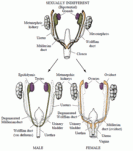
• A fertilized egg does not survive once it attaches to uterus.
• The eggs cannot move from the ovaries to the womb.
• The ovaries have problems producing eggs.
MALE INFERTILITY

Male infertility may be due to:
• Decreased number of sperm
• Blockage that prevents the sperm from being released
• Defects in the sperm
Exams and Tests
• Blood and imaging tests
• Sperm testing
• Exam of the testes and penis
• Ultrasound of the male genitals
• Testicular biopsy

Jaundice
Jaundice is a yellow color of the skin, mucus membranes, or eyes. Jaundice is often a sign of a problem with the liver, gallbladder, or pancreas.
Causes
• Too many red blood cells are dying
• The liver is overloaded or damaged
Symptoms
• Yellow skin and the white part of the eyes
• Yellow color inside the mouth
• Dark or brown-colored urine
• Pale or clay-colored stools

Kidney stones
A kidney stone is a solid mass made up of tiny crystals.
What to Expect at Home
• Drinking extra water and other liquids
• Eating more of some foods and cutting back on other foods

Knee joint replacement
Knee joint replacement is a surgery to replace a knee joint with a man-made joint.
Why the Procedure is Performed
• You are having pain from knee
• You cannot walk and take care of yourself.
• Your knee pain has not improved with other treatment.

Knee pain
Knee pain may start suddenly, often after an injury or exercise.
Causes
• Being overweight.
• Overusing your knee can trigger knee problems.
Home Care
• Rest and avoid activities that cause pain. Avoid putting weight on your knee.
• Apply ice.
• Keep your knee raised.
• Wear an elastic bandage or elastic sleeve.
• Sleep with a pillow underneath or between your knees.

LASIK eye surgery
LASIK is eye surgery that permanently changes the shape of front of the eye.
It is done to improve vision and reduce a person’s need for glasses or contact lenses.

Mammogram
A mammogram is an x-ray picture of the breasts. It is used to find breast tumors and cancer.
How the Test is Performed
You will be asked to undress from the waist up. You will be given a gown to wear. Depending on the type of equipment used, you will sit or stand.
One breast at a time is rested on a flat surface that contains the x-ray plate. A device called a compressor will be pressed firmly against the breast. This helps flatten the breast tissue.
The x-ray pictures are taken from several angles. You may be asked to hold your breath as each picture is taken.
How to Prepare for the Test
DO NOT use deodorant, perfume, powders, or ointments under your arms or on your breasts on the day of the mammogram.
Remove all jewelry from your neck and chest area.
How the Test will Feel
The compressor surfaces may feel cold. When the breast is pressed down, you may have some pain. This needs to be done to get good quality images.

Mouth ulcers
Mouth ulcers are sores or open lesions in the mouth.
Symptoms
• Open sores in the mouth
• Pain or discomfort in the mouth
Exams and Tests
• Blood tests
• Biopsy.

RBC count
An RBC count is a blood test that measures how many red blood cells you have.
RBCs contain hemoglobin, which carries oxygen.
How much oxygen your body tissues get depends on how many RBCs you have and how well they work.
How the Test is Performed
A blood sample is needed.
How to Prepare for the Test
No special preparation is necessary.
How the Test will Feel
When the needle is inserted to draw blood, some people feel moderate pain.

Radiation therapy
Radiation therapy uses high-powered x-rays, particles, or radioactive seeds to kill cancer cells.
SIDE EFFECTS OF RADIATION THERAPY
Radiation therapy can also damage or kill healthy cells. The death of healthy cells can lead to side effects.

Rabies
Rabies is a deadly viral infection that is mainly spread by infected animals.The infection is caused by rabies virus.
Rabies is spread by infected saliva that enters the body through a bite or broken skin.
The virus travels from the wound to the brain, where it causes swelling or inflammation.
This inflammation leads to symptoms of the disease.
Symptoms
• Bite site is very sensitive
• Mood changes
• Nausea and vomiting
• Loss of feeling in an area of the body
• Loss of muscle function
• Low-grade fever with headache
• Pain at the site of the bite
• Restlessness
• Swallowing difficulty
Exams and Tests
• MRI of brain
• CT head

Pregnancy test
A pregnancy test measures a hormone in the body. It appears in the blood and urine of pregnant women as early as 10 days after conception.
How the Test is Performed
A pregnancy test is done using blood or urine. The blood test is done by drawing a single tube of blood and sending it to a laboratory.

Painful menstrual periods
Painful menstrual periods are periods in which a woman has lower abdominal pain, which can be sharp or aching and come and go. Back pain may also be present.
Home Care
• Apply a heating pad to your lower belly area, below your belly button.
• Do light circular massage with your fingertips around your lower belly area.
• Drink warm beverages.
• Eat light but frequent meals.
• Keep your legs raised while lying down, or lie on your side with your knees bent.
• Take warm showers or baths.
• Walk or exercise
• Lose weight if you are overweight.

Painful swallowing
Swallowing pain is any pain or discomfort while swallowing. You may feel it high in the neck or lower down behind the breastbone.
Home Care
• Eat slowly and chew food well.
• Eat pureed foods or liquids if solid foods are hard to swallow.
• Avoid very cold or very hot foods.

Obesity
Obesity means having too much body fat. It is not the same as being overweight
Causes
• Eating more food than your body can use
• Drinking too much alcohol
• Not getting enough exercise
Exams and Tests
• Body mass index
• Waist measurement

X-ray

X-rays are a type of electromagnetic radiation, just like visible light.
An x-ray machine sends individual x-ray particles through the body. The images are recorded on a computer or film.
How to Prepare for the Test
Metal can cause unclear images. You will need to remove all jewelry and you may need to wear a hospital gown.
How the Test will Feel
X-rays are painless. Some body positions needed during an x-ray may be uncomfortable for a short time.

Varicocele
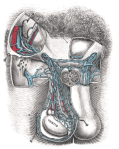
A varicocele is the swelling of the veins inside the scrotum.
Causes
A varicocele forms when valves inside the veins that run along the spermatic cord prevent blood from flowing properly. Blood backs up, leading to swelling and widening of the veins.
Symptoms
• Enlarged, twisted veins in the scrotum
• Bulge in the scrotum
• Possible problems with fertility or decreased sperm count
Treatment
• A jock strap or snug underwear may help ease discomfort.
• Surgery

Urination – painful
Painful urination is any pain, discomfort, or burning sensation when passing urine.
Causes
• Bladder infection
• Swelling and irritation of urethra)
• Irritation of the vaginal tissue caused by bubble bath, perfumes, or lotions

Urinalysis
Urinalysis is the physical, chemical, and microscopic examination of urine.
It involves a number of tests to detect and measure various compounds that pass through the urine.

Thyroid function tests
Thyroid function tests are used to tell whether your thyroid is working normally.

Toothaches
A toothache is pain in or around a tooth.
Causes
• Injury to the jaw or mouth
• Heart attack
• Tooth decay
Home Care
Use good oral hygiene to prevent tooth decay.

Sunburn
A sunburn is reddening of the skin that occurs after you are exposed to the sun or other ultraviolet light.
Home Care
• Take a cool shower.
• Loose cotton clothing should be worn.
• Drink lots of water.

Semen analysis
Semen analysis measures the amount and quality of a man’s semen and sperm.
Semen is the thick, white fluid released during ejaculation that contains sperm.
You will need to provide a semen sample.
Methods for collecting a sperm sample include:
• Masturbating into a sterile jar or cup
• Using a special condom during intercourse
The following things will be evaluated:
• How the semen thickens into a solid and turns to liquid
• Fluid thickness, acidity, and sugar content
• Resistance to flow
• Movement of the sperm
• Number and structure of the sperm
• Volume of semen
How to Prepare for the Test
Do not have any sexual activity that causes ejaculation for 2 to 3 days before the test.

Broken bone
If more pressure is put on a bone than it can stand, it will split or break. A break of any size is called a fracture.
If the broken bone punctures the skin, it is called an open fracture.
A stress fracture is a hairline crack in the bone that develops because of repeated or prolonged forces against the bone.
Symptoms
• Swelling, bruising, or bleeding
• Intense pain
• Numbness and tingling
• Limited mobility or inability to move a limb
First Aid
1. Check the person’s airway and breathing.
2. Keep the person still and calm.
3. Examine the person closely for other injuries.
4. If the skin is broken, it should be treated immediately to prevent infection.
5. Apply ice packs to reduce pain and swelling.
TREAT BLEEDING
Place a dry, clean cloth over the wound to dress it.
DO NOT
• DO NOT move the person unless the broken bone is stable.
• DO NOT move a person who has a possible spine injury.
• DO NOT attempt to straighten a bone
• DO NOT test a bone’s ability to move.

Brain surgery
Brain surgery is an operation to treat problems in the brain and surrounding structures.
Before surgery, the hair on part of the scalp is shaved and the area is cleaned. The doctor makes a surgical cut through the scalp. The location of this cut depends on where the problem in the brain is located.
If possible, the surgeon will make a smaller hole and insert a tube with a light and camera on the end. This is called an endoscope.
The bone flap is usually replaced after surgery, using small metal plates, sutures, or wires.
The time it takes for the surgery depends on the problem being treated.
Why the Procedure is Performed
• Brain tumor
• Bleeding in the brain
• Blood clots in the brain
• Weaknesses in blood vessels
• Abnormal blood vessels in the brain
• Damage to tissues covering the brain
• Infections in the brain
• Severe nerve or face pain
• Skull fracture
• Pressure in the brain after an injury or stroke
Risks
• Problems with speech, memory, muscle weakness, balance, vision, coordination, and other functions.
• Blood clot or bleeding in the brain
• Seizures
• Stroke
• Coma
• Infection in the brain, wound, or skull
• Brain swelling

Bone x-ray
A bone x-ray is an imaging test to look at the bones.
How the Test is Performed
The test is done in a hospital radiology department by an x-ray technician. For the test, you will position the bone to be x-rayed on the table. Pictures are then taken, and the bone is re positioned for different views.
How to Prepare for the Test
You must remove all jewelry for the x-ray.
How the Test will Feel
The x-rays are painless. Changing position for getting different views of the bone may be uncomfortable.

Bone Marrow Donation
Bone marrow is the soft, fatty tissue inside your bones. Bone marrow contains stem cells, which are immature cells.
Bone marrow donation can be done either by collecting a donor’s bone marrow surgically, or by removing stem cells from a donor’s blood.
There are two types of bone marrow donation:
• when people donate their own bone marrow.
• when another person donates bone marrow.
A brother or sister is most likely to be a good match. Sometimes parents, children, and other relatives are good matches. But only about 30% of people who need a bone marrow transplant can find a matching donor in their own family.

Back pain
To help prevent reinjuring your back at work, or hurting it in the first place, follow these tips,
Exercise helps to prevent future back pain.
If you are overweight, you can lose some weight.
Long rides can be hard on your back.

Bedwetting
Bedwetting is when a child wets the bed at night, more than twice a month, after age 5 or 6.
• The child does not wake up when the bladder is full. The child’s brain has not learned to respond to the signal that the bladder is full
• Children wet the bed after being fully toilet trained. It might be physical, emotional, or just a change in sleep. This is less common.
Causes
• Urinary tract infections
• Diabetes
Self-care at Home
• Help your child understand not to hold urine for a long time.
• Make sure your child goes to the bathroom at normal times during the day and evening.
• Be sure your child goes to the bathroom before going to sleep.
• It is OK to reduce the amount of fluid your child drinks a few hours before bedtime. Just do not overdo it.
• Reward your child for dry nights
• Bedwetting alarms work best if you use them every night.

Blackheads
Blackheads are tiny, dark spots on the skin. Blackheads can be treated with creams.

Biopsy
A biopsy is the removal of a small piece of tissue for laboratory examination.
How the Test is Performed
.
A needle biopsy removes tissue using a needle. The needle is passed several times through the tissue. Needle biopsies are often done using CT scan or ultrasound.
An open biopsy is surgery that uses local or general anesthesia. The surgeon makes a cut into the affected area, and the tissue is removed.
A camera-like instrument (laparoscope) and tools can be inserted.
How the Test will Feel
In a needle biopsy, you will feel a small sharp pinch at the site of the biopsy. Sometimes local anesthesia is injected to lessen the pain.
In an open or laparoscopic biopsy, local or general anesthesia is often used so that you will be pain-free.
Risks
• Bleeding
• Infection

Blindness and vision loss
Blindness is a lack of vision. It may also refer to a loss of vision that cannot be corrected with glasses or contact lenses.
• With cataracts, vision may be cloudy or fuzzy, and bright light
• With diabetes, vision may be blurred, there may be shadows
• With glaucoma, there may be tunnel vision and missing areas of vision

Arthritis
Arthritis is inflammation of one or more joints. A joint is the area where 2 bones meet.
In most cases, the joint inflammation goes away after the cause goes away or is treated. Sometimes, it does not. Arthritis may occur in men or women.
Symptoms
• Joint pain
• Joint swelling
• Reduced ability to move the joint
• Redness and warmth of the skin around a joint
• Joint stiffness, especially in the morning
Blood tests and joint x-rays are often done to check for infection and other causes of arthritis.

Animal bites – self-care
An animal bite can break, puncture, or tear the skin. Animal bites that break the skin put you at risk for infections.
Bites that cause a puncture wound are more likely to become infected.Because of the risk of infection, you should see your doctor within 24 hours for any bite that breaks the skin.
• Calm and reassure the person.
• Wash your hands thoroughly with soap and water before treating the wound.
For deeper wounds, you may need stitches. The health care provider may give you a tetanus shot if you have not had one in the last 5 years.
An animal bite is more likely to become infected in people who have weakened immune systems & Diabetes

Allergic reactions
Allergic reactions are common. The immune response that causes an allergic reaction is similar to the response that causes hay fever.
Many allergic reactions are mild, while others can be severe and life threatening. They can be confined to a small area of the body, or they may affect the entire body.
First-time exposure may produce only a mild reaction. Repeated exposures may lead to more serious reactions.
Symptoms
• Hives
• Itching
• Nasal congestion
• Rashes
• Watery, red eyes
• Abdominal pain
• Breathing sounds
• Anxiety
• Chest discomfort or tightness
• Cough
• Diarrhea
• Difficulty breathing, wheezing
• Difficulty swallowing
• Dizziness or lightheadedness
• Flushing or redness of the face
• Nausea or vomiting

Alcohol and pregnancy
Pregnant women are strongly urged not to drink alcohol during pregnancy.
Alcohol breaks down much more slowly in the baby’s body than in an adult. That means the baby’s blood alcohol level remains increased longer than the mother’s. This can harm the baby and can sometimes lead to lifelong damage.
• Behavior and attention problems
• Heart defects
• Changes in the shape of the face
• Poor growth before and after birth
• Poor muscle tone and problems with movement and balance
• Problems with thinking and speech
• Learning problems

Aging changes in the female reproductive system
Aging changes in the female reproductive system result mainly from changing hormone levels. One clear sign of aging occurs when your menstrual periods stop permanently.
Eventually your periods will become much less frequent, until they stop completely.
Along with changes in your periods, physical changes in your reproductive tract occur as well.
Getting regular exercise, eating healthy foods, and staying involved in activities with friends and loved ones can help the aging process go more smoothly.

Aging changes in the male reproductive system
Aging changes in the male reproductive system may include changes in testicular tissue, sperm production, and erectile function. These changes usually occur gradually.
Aging changes in the male reproductive system occur primarily in the testes. Testicular tissue mass decreases. The level of the male sex hormone, testosterone stays the same or decreases gradually. There may be problems getting an erection.
Fertility:
The tubes that carry sperm may become less elastic . The testes continue to produce sperm, but the rate of sperm cell production slows.
Effect of Changes
Fertility varies from man to man. Age does not predict male fertility. Prostate function does not affect fertility. The volume of fluid ejaculated usually remains the same, but there are fewer living sperm in the fluid.

Acne
Acne is a skin condition that causes pimples ,Whiteheads, blackheads, and red, inflamed patches of skin may develop.
Acne is most common in teenagers, but anyone can get acne, even babies.
CAUSE
- Hormonal changes that make the skin oilier. These may be related to puberty, menstrual periods, pregnancy, birth control pills, or stress.
- Greasy or oily cosmetic and hair products.
- Heavy sweating and humidity.
Acne commonly appears on the face and shoulders. It may also occur on the trunk, arms, legs, and buttocks.

SELF-CARE
- Clean your skin gently with a mild, nondrying soap
- Remove all dirt or make-up. Wash once or twice a day, including after exercising.
- Avoid scrubbing or repeated skin washing.
- Shampoo your hair daily, especially if it is oily.
- Comb or pull your hair back to keep the hair out of your face.
What NOT to do:
- Try not to squeeze, scratch, pick, or rub the pimples. This can lead to skin infections and scarring.
- Avoid wearing tight headbands, baseball caps, and other hats.
- Avoid touching your face with your hands or fingers.
- Avoid greasy cosmetics or creams.
- DO NOT leave make-up on overnight.

Absent menstrual periods – secondary
Women who take birth control pills may not have any monthly bleeding. When they stop taking these hormones, their periods may not return for more than 6 months.
You are more likely to have absent periods if you:
• Exercise too much and for long periods of time
• Have very low body fat (less than 15 to 17%)
• Have severe anxiety or emotional distress
• Lose a lot of weight suddenly
• Brain (pituitary) tumors
• Reduced function of the ovaries
Symptoms
In addition to having no menstrual periods, other symptoms can include:
• Breast size changes
• Weight gain or weight loss
• Discharge from the breast or change in breast size
• Acne and increased hair growth in a male pattern
• Vaginal dryness
• Voice changes
Exams and Tests
A pregnancy test and Blood Test will be done.

Absent menstrual periods – primary
If no periods have occurred when a girl is older than 15, further testing may be needed. The need is more urgent if she has gone through other normal changes that occur during puberty.
Being born with incompletely formed genital or pelvic organs can lead to a lack of menstrual periods. Some of these defects include:
• Blockages or narrowing of the cervix
• Hymen that has no opening
• Missing uterus or vagina
• Vaginal septum (a wall that divides the vagina into 2 sections)
Hormones play a big role in a woman’s menstrual cycle.
Exams and Tests
The health care provider will perform a physical exam to check for birth defects of the vagina or uterus.A pregnancy and Blood test will be done.
Treatment
Treatment depends on the cause of the missing period.

Abdominal MRI scan
You may be asked to wear a hospital gown or clothing without metal.
You will lie on a narrow table. The table slides into a large tunnel-shaped scanner.
During the MRI, the person who operates the machine will watch you from another room. The test lasts about 30 to 60 minutes, but it may take longer.
How to Prepare for the Test
You may be asked not to eat or drink anything for 4 to 6 hours before the scan.
How the Test will Feel
An MRI exam causes no pain. You may get medicine to relax you if you have a problem lying still or are very nervous. Moving too much can blur MRI images and cause errors.

Abdomen – swollen
A swollen abdomen is when your belly area is bigger than usual.
Cause:
• Air swallowing
• Buildup of fluid in the abdomen (this can be a sign of a serious medical problem)
• Gas in the intestines from eating foods that are high in fiber Irritable bowel syndrome
• Lactose intolerance
• Ovarian cyst
• Partial bowel blockage
• Pregnancy
• Premenstrual syndrome (PMS)
• Uterine fibroids
• Weight gain
A swollen abdomen that is caused by eating a heavy meal will go away when you digest the food. Eating smaller amounts will help prevent swelling.

Abdominal bloating
Abdominal bloating is a condition in which the belly (abdomen) feels full and tight. Your belly may look swollen (distended).
Cause:
• Swallowing air
• Constipation
• Gastroesophageal reflux (GERD)
• Irritable bowel syndrome
• Lactose intolerance and problems digesting other foods
• Overeating
• Small bowel bacterial overgrowth
• Weight gain
You may take the following steps when abdominal bloating seen:
• Avoid chewing gum or carbonated drinks. Stay away from foods with high levels of fructose or sorbitol.
• Avoid foods that can produce gas, such as Brussels sprouts, turnips, cabbage, beans, and lentils.
• Do not eat too quickly.
• Stop smoking.

Abdominal CT scan
- You will lie on a narrow table that slides into the center of the CT scanner. Most often, you will lie on your back with your arms raised above your head
- Once you are inside the scanner, the machine’s x-ray beam rotates around you. Modern spiral scanners can perform the exam without stopping.
- A computer creates separate images of the belly area. These are called slices. These images can be stored, viewed on a monitor, or printed on film. Three-dimensional models of the belly area can be made by stacking the slices together.
- You must be still during the exam, because movement causes blurred images. You may be told to hold your breath for short periods of time.
- In many cases, an abdominal CT is done with a pelvis CT.
- The scan should take less than 30 minutes.
How to Prepare for the Test
• Do not eat or drink anything for 4 to 6 hours before the test.
• You may have to drink the contrast before the exam.
• Too much weight can damage the scanner. Find out if the CT machine has a weight limit if you weigh more than 300 pounds (135 kg).
• You will need to take off your jewelry and wear a hospital gown during the study.
How the Test will Feel
Lying on the hard table may be a little bit uncomfortable.


